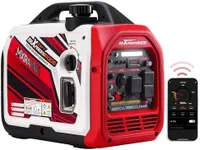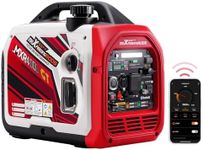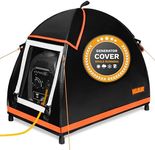Buying Guide for the Best 30 Amp Quiet Generator
Choosing the right 30-amp quiet generator involves understanding your power needs, the environment in which you'll be using the generator, and the specific features that will make your experience more convenient and efficient. A 30-amp generator is typically used for RVs, camping, or as a backup power source for home appliances. The 'quiet' aspect is crucial if you plan to use it in residential areas or campsites where noise levels are a concern. Here are the key specifications you should consider when selecting a 30-amp quiet generator and how to navigate them to find the best fit for your needs.Power OutputPower output, measured in watts, indicates how much electrical power the generator can produce. This is important because it determines what appliances and devices you can run simultaneously. For a 30-amp generator, you typically look at outputs ranging from 3,000 to 4,000 watts. If you need to power multiple high-wattage appliances, opt for the higher end of this range. For lighter use, such as running a few small devices or lights, a lower wattage will suffice.
Noise LevelNoise level, measured in decibels (dB), indicates how loud the generator will be when in operation. This is crucial for maintaining a peaceful environment, especially in residential areas or campsites. Quiet generators usually operate at around 50-60 dB, which is comparable to a normal conversation. If you need the generator for camping or RV use, aim for the lower end of this range to avoid disturbing others. For home backup use, a slightly higher noise level might be acceptable.
Fuel Type and EfficiencyGenerators can run on various fuel types, including gasoline, propane, and diesel. Fuel efficiency determines how long the generator can run on a full tank. Gasoline is common and easy to find, but propane is cleaner and can be stored longer. Diesel is more efficient but less common for smaller generators. Consider how easy it is to access and store the fuel type you choose. For extended use, look for a generator with a longer runtime per tank to reduce the frequency of refueling.
PortabilityPortability refers to how easy it is to move the generator around. This is important if you plan to use the generator in different locations, such as moving it between your home and a campsite. Look for features like wheels and handles, and consider the weight of the generator. Lighter models with built-in wheels and handles are easier to transport, making them ideal for camping or RV use. Heavier models might be more suitable for stationary use at home.
Inverter TechnologyInverter technology allows the generator to produce cleaner and more stable power, which is important for sensitive electronics like laptops and smartphones. This technology also tends to make generators quieter and more fuel-efficient. If you plan to power sensitive devices, look for a generator with inverter technology. For basic power needs, this feature might not be as critical, but it can still offer benefits in terms of noise and fuel efficiency.
Parallel CapabilityParallel capability allows you to connect two generators to increase power output. This is useful if your power needs grow over time or if you want the flexibility to add more power without buying a larger, more expensive generator. If you anticipate needing more power in the future or want the option to expand, look for a generator with parallel capability. If your power needs are stable and well-defined, this feature might not be necessary.
Safety FeaturesSafety features like automatic shut-off, overload protection, and low-oil indicators are crucial for preventing damage to the generator and connected devices, as well as ensuring user safety. Automatic shut-off turns the generator off if it overheats or runs low on oil, while overload protection prevents damage from drawing too much power. Look for generators with these safety features to ensure reliable and safe operation, especially if you plan to use the generator frequently or in varied conditions.

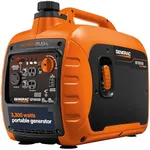
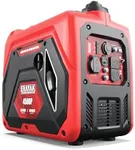

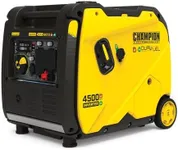


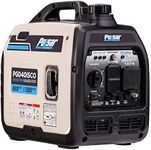


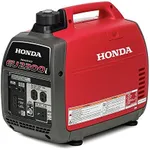
![[Upgraded Version] ALLPOWERS S2000 Portable Power Station 2000W (Peak 4000W) MPPT Solar Generator 1500Wh Backup Battery with 4 AC Outlets for Outdoor Camping RV Emergency Off-Grid](https://images-proxy.bestreviews.guide/YtTaRg6uNv-LaNq9_7sPyzjq62s=/0x150/https://m.media-amazon.com/images/I/31g7wSEKaOL._AC_CX679_.jpg)
